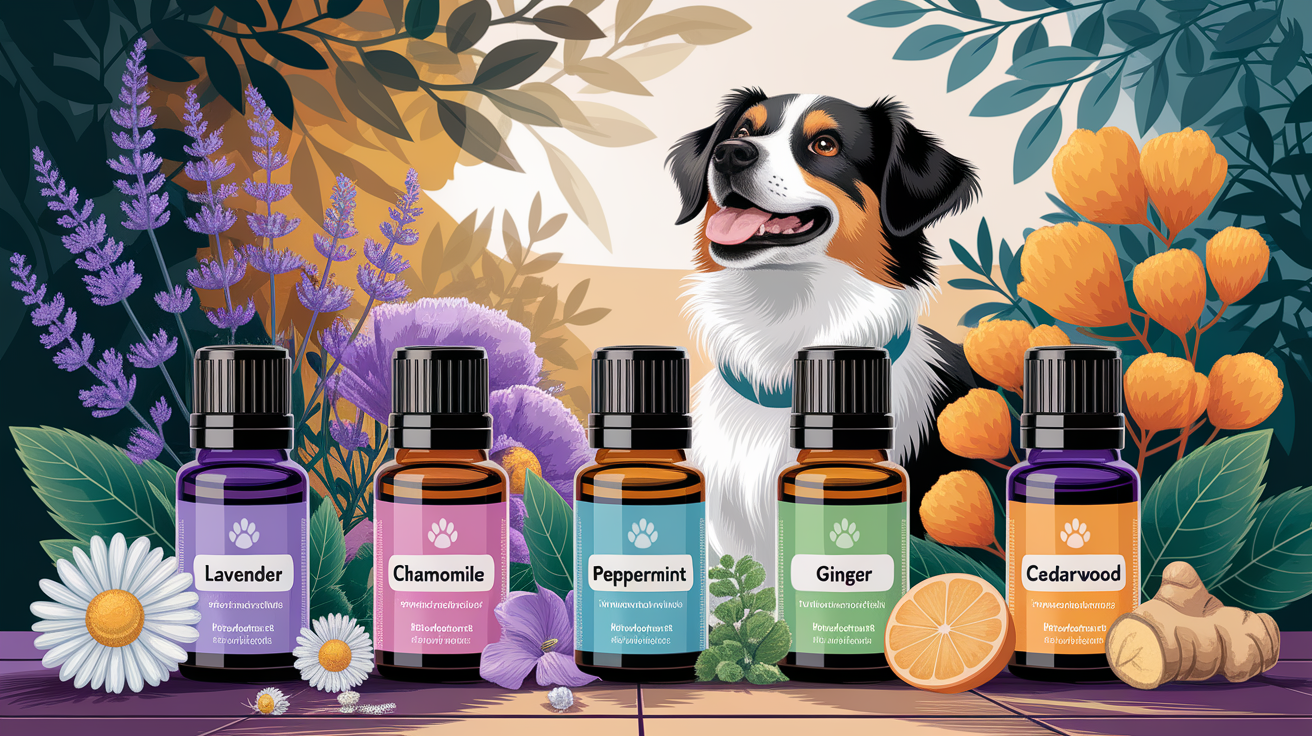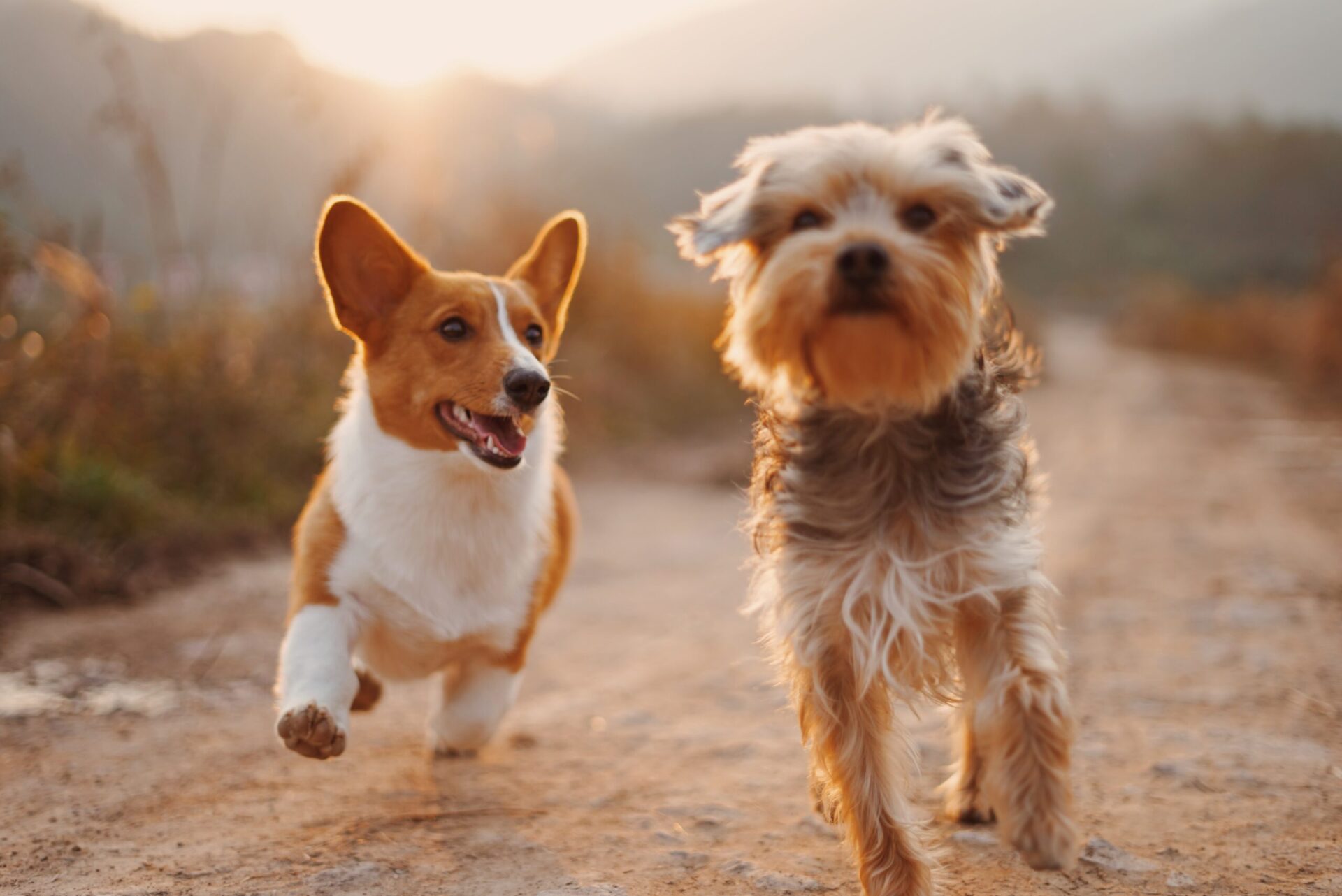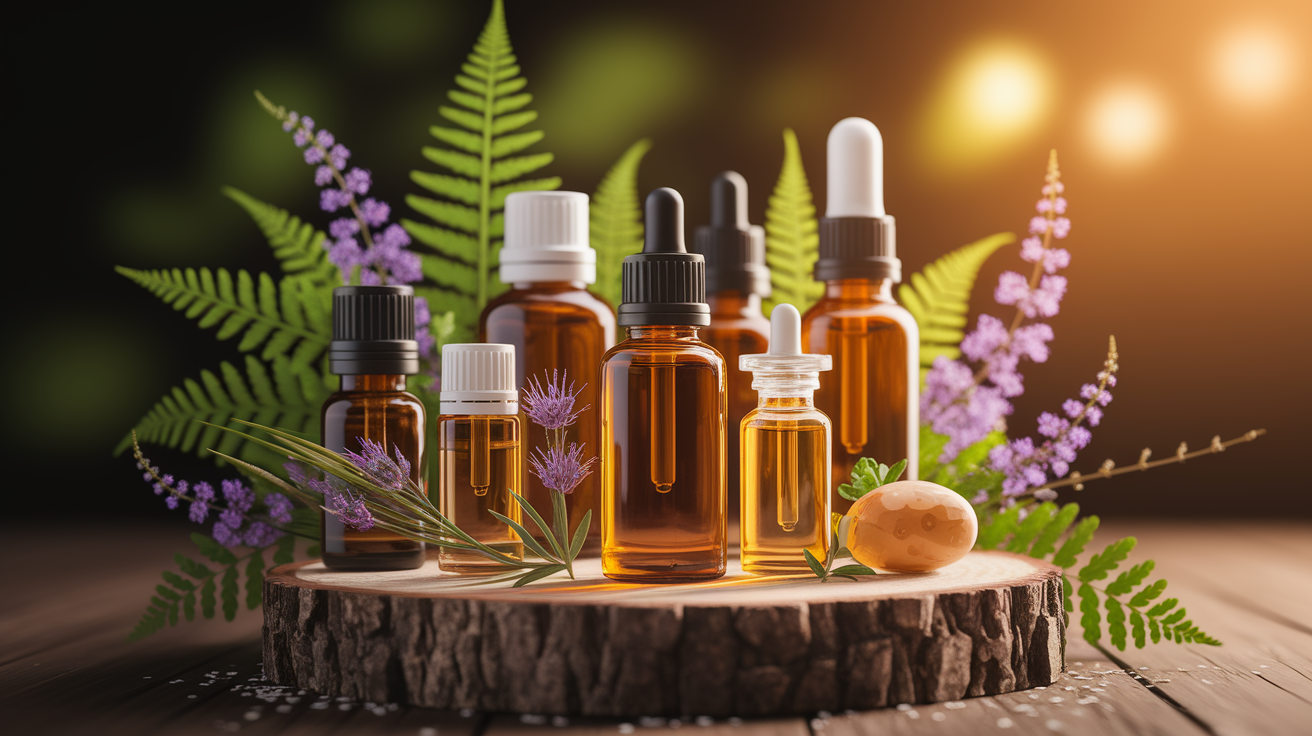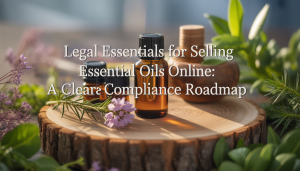Pawsitively Safe Scents: Quick Hit
When I first started exploring the world of aromatherapy for dogs, I quickly discovered that our canine companions experience essential oils very differently than we do. Their sensitive noses can detect scents at concentrations nearly 10,000-100,000 times lower than humans can! What smells pleasant to us might be overwhelming—or even dangerous—for them.

Let me be crystal clear from the start: not all essential oils are safe for your furry friend. Dogs metabolize substances differently than humans do, making them particularly vulnerable to certain oils that we might use without issue. The oils that are toxic to dogs include cinnamon, clove, citrus varieties, peppermint, pine, tea tree oil, and many others—I’ll get into more specifics shortly.
On the brighter side, when used correctly, certain essential oils can support your dog’s wellbeing as part of a holistic pet care approach. Lavender, chamomile, frankincense, myrrh, and ginger are among the oils that are generally considered safer options for canine companions—though I always emphasize that “safer” doesn’t mean risk-free.
Before introducing any essential oils to your dog’s environment, consulting with a veterinary aromatherapist or a vet familiar with essential oils is absolutely non-negotiable. The American Society for the Prevention of Cruelty to Animals (ASPCA) and the Pet Poison Helpline remain excellent resources if you have concerns about potential toxicity.
Top 5 Essential Oils Safe for Dogs
After years of research and working with experts in pet health, I’ve identified several oils that show promise for supporting canine wellness when used appropriately. These oils have demonstrated antimicrobial properties in controlled settings, though their effectiveness and safety require careful consideration.

1. Lavender Oil
Lavender remains my go-to recommendation for dogs dealing with anxiety or mild stress. I’ve seen remarkable results when using heavily diluted lavender during thunderstorms or vet visits. Research suggests lavender may help calm nervous dogs, making it one of the best essential oils for dogs with anxiety. However, even with this gentler oil, proper dilution is crucial—never more than 1-2 drops per tablespoon of carrier oil.
2. Chamomile Oil
I’ve found chamomile to be particularly helpful for dogs with sensitive skin issues. Its gentle, soothing properties make it one of the best essential oils for dog itchy skin when properly diluted and applied. Roman chamomile seems to work especially well for calming both mind and body, which can be beneficial for dogs who scratch due to stress-related skin conditions.
3. Frankincense Oil
Frankincense has earned a special place in my natural remedies for dogs toolkit. This ancient oil supports immune function and can help ease discomfort in senior dogs. I’ve noticed it works wonderfully when diffused at very low concentrations (1-2 drops in a diffuser placed in a large room with good ventilation).
4. Myrrh Oil
Myrrh has impressive properties that support skin health and can help with minor wounds when properly diluted. I always consult a veterinary professional before using myrrh on a dog with any skin condition, but when approved, it can be helpful for minor irritations.
5. Ginger Oil
For dogs with mild digestive discomfort or motion sickness, ginger oil can be a gentle support. I never apply it directly but instead diffuse it very lightly in the room where the dog rests. Studies have shown that ginger can help with nausea in various species, though it must be used with extreme caution around pets.
While some research indicates certain essential oils may reduce parasite burdens when properly formulated and applied, I strongly caution against DIY parasite treatments. Clinical trials showing tea tree oil’s effectiveness against Demodex mites are promising, but tea tree oil can also be highly toxic to dogs if used incorrectly.
Safe Dilution & Application
When it comes to using essential oils around dogs, dilution isn’t just important—it’s absolutely essential. I’ve seen far too many well-meaning pet parents make the mistake of applying oils at human-strength concentrations, which can be dangerous for our four-legged friends.
Proper Dilution Ratios for Dogs
The dilution ratios for dogs are much more conservative than for humans:
- Small dogs (under 20 lbs): 3-4 drops of essential oil per 1 ounce of carrier oil (that’s a 0.5-0.75% dilution)
- Medium dogs (20-50 lbs): 5-6 drops per ounce of carrier oil (approximately 1% dilution)
- Large dogs (50+ lbs): 8-10 drops per ounce of carrier oil (1.5-2% dilution)
I always err on the side of caution and start with even lower dilutions, especially when introducing a new oil to a dog’s environment. Never apply undiluted essential oils directly to your dog’s coat or skin—this rule has no exceptions!
Safe Application Methods
After years of experience, I’ve found these application methods to be the safest:
Diffusion
When diffusing essential oils around pets, I follow these guidelines:
- Use a water-based diffuser (not a heat diffuser) on the lowest setting
- Limit diffusion to 10-15 minutes at a time
- Always ensure dogs have an exit path to another room where no oils are being diffused
- Diffuse in a well-ventilated space
- Use only 1-2 drops of essential oil in the diffuser
- Never diffuse continuously when pets are present
Topical Application
For topical application—which I only recommend for specific situations with veterinary approval:
- Always dilute in a high-quality carrier oil like fractionated coconut oil
- Apply to small areas only, never over large portions of the dog’s body
- Avoid areas the dog can easily lick
- Apply to the back of the neck or back of legs when necessary
- Monitor for any signs of discomfort or irritation
Essential oil brand quality matters significantly when working with dogs. I exclusively use therapeutic-grade oils from reputable companies that perform third-party testing. The National Association for Holistic Aromatherapy (NAHA) provides helpful guidelines for selecting quality products.
Remember that dogs are particularly susceptible due to allergy risks and metabolic differences from humans. What works for you might not be appropriate for your dog.
Watchful & Ready: Monitoring Your Dog
Introducing essential oils to dogs safely requires careful observation and a gradual approach. I always tell pet parents to be their dog’s advocate—no one knows your furry friend better than you do.
Signs of Essential Oil Toxicity
Knowing the signs of essential oil poisoning in dogs has saved countless pet lives. Watch vigilantly for:
- Drooling or difficulty breathing
- Fatigue or weakness
- Muscle tremors or wobbliness
- Vomiting or diarrhea
- Redness or burns on tongue, gums, or skin
- Pawing at the face or mouth
- Changes in behavior or walking pattern
- Coughing or wheezing
If you notice any of these symptoms, immediately move your dog to fresh air and contact your veterinarian or the Pet Poison Helpline. Don’t wait to see if symptoms improve—essential oil toxicity can escalate quickly.
Safe Introduction Methods
Here’s my proven method for introducing essential oils to dogs safely:
- Start by placing the closed bottle of essential oil near your dog and observe their reaction
- If they back away or seem uncomfortable, respect that response and try a different oil
- For oils they seem comfortable with, place one drop on a cotton ball and leave it several feet away from their resting area
- Observe for 24 hours before considering diffusion
- When diffusing, start with just one drop and only for 5-10 minutes
- Always provide an escape route to a room without oils
- Gradually increase exposure only if your dog shows no adverse reactions
For safe essential oils for senior dogs, I’m especially cautious and use even lower dilutions, as older dogs often have more sensitive systems. The key is patient observation and respecting your dog’s responses.
Dog calming techniques using essential oils should always be part of a broader approach that includes behavioral training, proper exercise, and veterinary care. Essential oils can support these efforts but shouldn’t replace them.
Tail-Wagging Farewell
After a decade of working with essential oils and dogs, the most important thing I’ve learned is that safety always comes first. The joy of seeing a dog relaxed and comfortable with appropriate aromatic support is wonderful, but it requires knowledge, caution, and respect for their unique physiology.
Remember these key takeaways:
- Always consult with a veterinary professional before using essential oils with your dog
- Start with the safest oils: lavender, chamomile, frankincense, myrrh, and ginger
- Dilute properly—far more than you would for humans
- Monitor carefully for any signs of discomfort or toxicity
- Respect your dog’s response—if they don’t like an oil, don’t use it
- Never use oils like cinnamon, citrus, peppermint, pine, wintergreen, or tea tree without specific veterinary guidance
- Quality matters—use only pure, high-quality oils from reputable companies
When done right, aromatherapy for pets can be a beautiful complement to holistic pet care. I’ve seen remarkable moments of calm during thunderstorms, relief from minor discomforts, and happy, relaxed dogs enjoying the gentle benefits of appropriate essential oil use.
Your dog trusts you completely—honor that trust by taking every precaution when exploring the world of essential oils. Their sensitive systems deserve our careful attention and respect. With knowledge, patience, and proper guidance, you can safely incorporate certain essential oils into your dog’s wellness routine.












